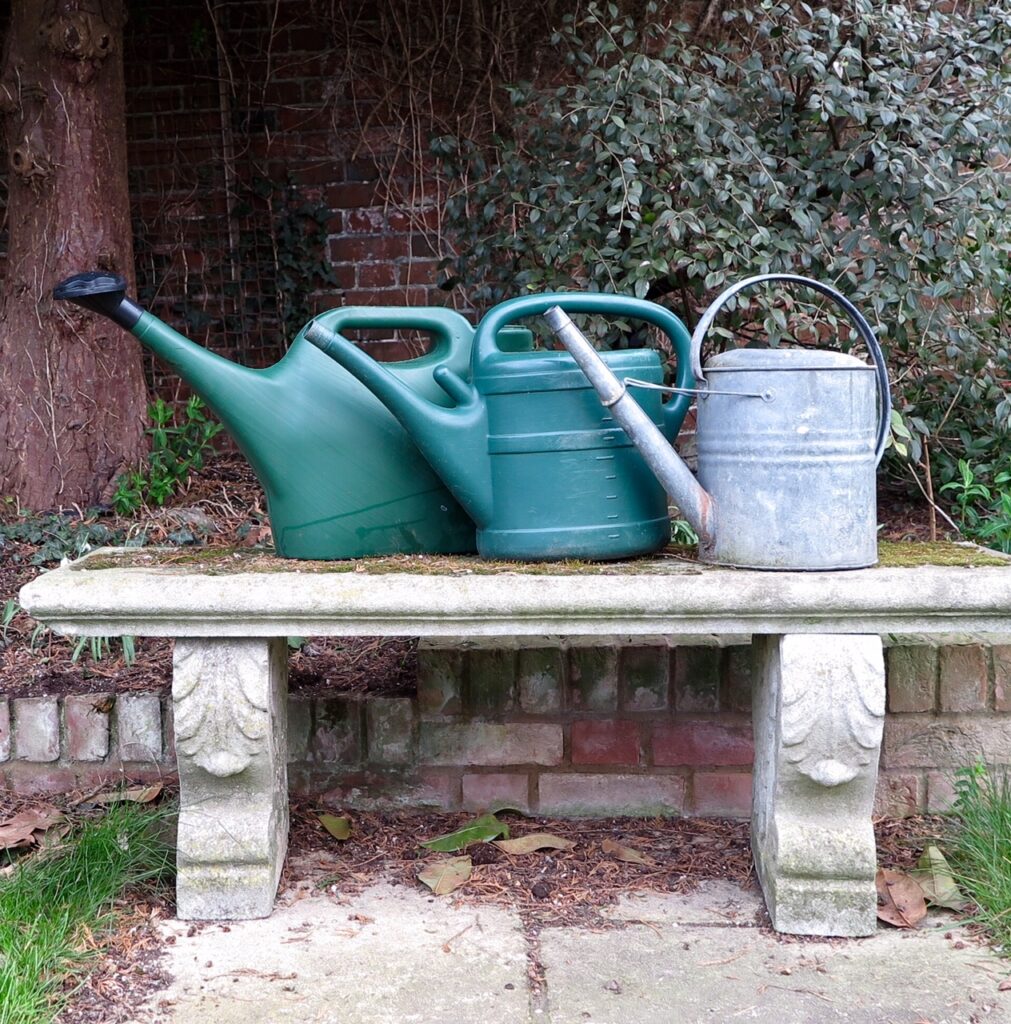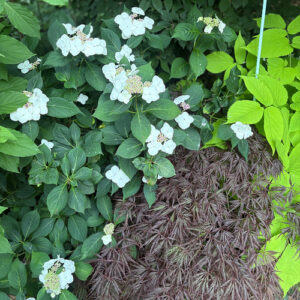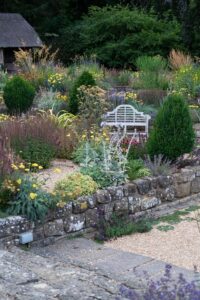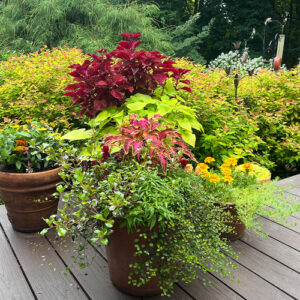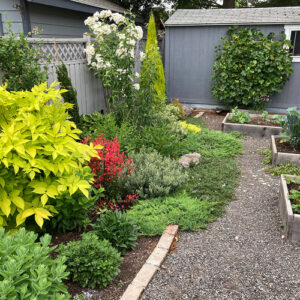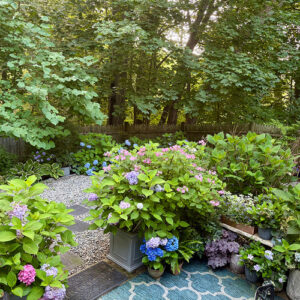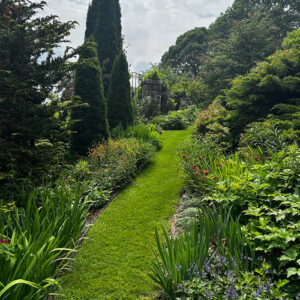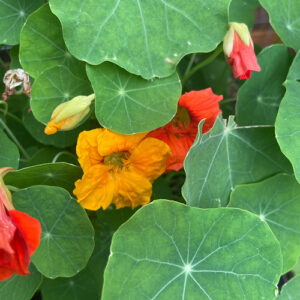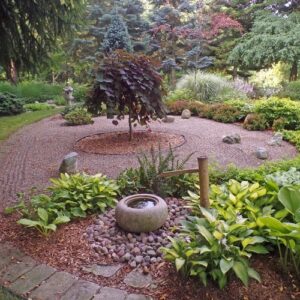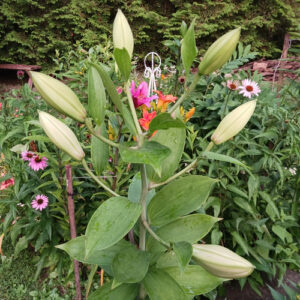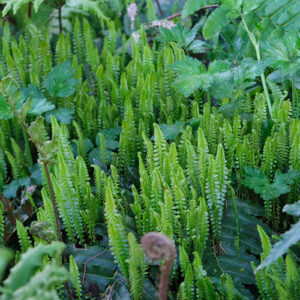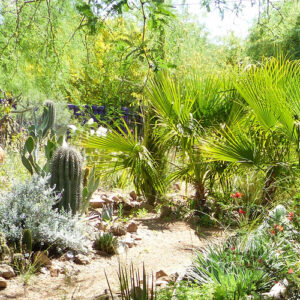May 17th, 2025 Posted In: Garden Style & Living
You’d expect to see innovative gardening ideas in the great country gardens. Yet I’ve just visited the Horniman Museum & Gardens in South London to talk to Head of Horticulture, Errol Fernandes, about their unusual and pioneering gardening ideas and techniques.
These gardening techniques are all about working with your garden and climate rather than battling to impose a set definition of what constitutes a beautiful garden.
They’re not ‘no work gardening’ (that doesn’t exist!). But this approach is an easier way of getting the best out of your garden, your soil and your climate.
And if you are facing challenges such as changing weather patterns or want to support wildlife better, then there are some useful lessons in the Horniman gardens approach.
The Horniman Museum was set up by its founder, Frederick Horniman, to ‘bring the world to South London.’ So they take a global approach, looking for ideas and techniques from around the world that can solve problems in our gardens today. This is a museum and gardens for the future – not just a collection of things from the past.
Four of the most innovative gardening ideas
These include a micro-forest and a Xerophytic (dry) garden, as well as new techniques for cutting down ornamental grasses over winter and sorting out re-plant disease in their classic Sunken Garden borders.
As you come in the gates, you’ll see the sand, gravel and sculptural plant shapes of their dry garden, known as the Xerophytic Garden. Anyone struggling to garden in a new-build estate or who is trying to garden in a soil full of rocks or rubble would find this a striking and beautiful alternative to a traditional garden.
Or turn the other way and walk toward the micro-forest, where hundreds of tiny young saplings were planted together to form a pollution-beating, noise-softening barrier against the busy main road. This can be done in a surprisingly small area, although it is more of an idea for middle-sized or larger gardens than for very small plots.
Look up towards the Prairie Garden where you may be in time to spot the unusual way they tie up their grasses and seedheads in spring. It looks like art – but it’s wildlife-friendly management!
Then stroll up to the Sunken Garden, where classic mixed borders used to be changed several times a year, depleting the soil and causing replant disease. Now the borders are still vibrant with colour but they are also wildlife-friendly and healthy. By using perennials and wildflowers, Errol has allowed the soil to recover its health, and it also means less work for the gardening team.
What is the Japanese micro forest method?
Many innovative gardening ideas come from Japan. The micro forest technique is also also known as Miyawaki, says Errol. ‘In the 1970s, Akira Miyawaki, a Japanese botanist and ecological expert, was observing naturalised forests. He saw that trees grew where seed had fallen, often in very close proximity to one another.’
Miyawaki saw that a dense thicket would grow up, creating a closed canopy in as little as three to five years. So he developed a method of planting lots of very young saplings close together.
The intensive way these trees grow means that these trees will absorb more carbon and pollution than normal trees. A micro forest also needs less maintenance than a hedge, because you don’t clip or prune it. The close planting restricts the growth of the trees.
‘The Miyawaki micro forest became quite popular in Japan and the US, and seems to be gaining popularity in the UK,’ says Errol. ‘The Horniman micro forest is about the sixth micro forest here in the UK.’
The project was funded by a public campaign. Errol’s team planted 900 trees – in 35 different species – in 400 square metres. ‘Miyawaki himself championed what he called PNV (Potential Native Varieties),’ says Errol. That means planting native species of trees.
But with the Horniman’s climate and ecology manifesto at the heart of everything they do, Errol decided that it was also important to include tree varieties that could cope with extreme weather conditions or a changing climate.
‘Even sporadic changes in weather – sometimes it’s intensely wet, cold or dry – can affect plants badly, so we planted a range of both native and non-native trees.’
A wider range of native and non-native trees also supports a broader range of wildlife.
How to plant a Miyawaki micro forest
‘You plant very young trees – they’re all pencil thickness and pencil height and are the same age,’ Errol explains.’We planted them just 40cm/50cm apart. They compete with each other at first, but then they start romping away and become an eco-system.’
‘We’re now in the third year and some of the trees are 15ft high, which is staggering when you think that creating a forest is usually a long term project.’
Errol thinks that you could plant a micro-forest in an area as small as 3m x 3m (approx 10ft x 10ft). ‘The key is that by planting them so close together, they keep each other in check,’ he says. ‘They’ll never grow to the full height of that the individual trees would.
The important thing is that you must NOT prune these trees. ‘You make your selection and you plant them, and it’s “hands off” after that,’ says Errol.
‘The main maintenance we did was to add a layer of straw-based mulch after planting so that weeds didn’t grow up and crowd out the young trees.’ It would be very difficult to weed such a tightly planted area and you certainly couldn’t strim.
‘Think of it as a native hedge, but without the pruning,’ he says.
A decorative new way to maintain The Prairie Garden
The Prairie Garden was created in partnership with James Hitchmough in 2018. It has mainly North American and South African prairie grasses.
The key to keeping these grasses growing well in our climate is that there is a layer of gravel that protects the crown of the plants. When the UK has a very wet winter, the water will drain down past the roots instead of sitting in the top soil and rotting the crown.
Errol’s main change here is in how they maintain the grasses. They’re not cleared away in autumn and are left to add sculptural interest to the garden over winter. They also offer habitat for insects and the seedheads are food for birds.
If you want to be wildlife friendly but clear up your garden in early spring…
When spring comes, it’s time to cut the grasses and seedheads down.
Some people just want the garden to look tidier. Others, like the Horniman, need to remove the dead material because if it all just collapses around the plant, it’ll help create a soil layer round the crown. And when wet weather comes, the layer will retain moisture and the crown will rot.
However Errol saw that the prairie grasses were a breeding ground for insect life. ‘When we cut down the grasses and seedheads, we could see there were invertebrates in the hollow stalks or clusters of ladybirds sheltering for the winter. ‘And it’s too cold for these species to emerge at that point.’
So cutting down the grasses and putting the debris on the compost heap takes away much of the wildlife benefit of maintaining them in the garden over winter.
Errol discussed with So instead of composting the cut grasses and seedheads, they tie them up on hazel posts, in ornamental and sculptural shapes. ‘We choose hazel because it takes a long time to rot down,’ explains Errol. ‘You could make a teepee with hazel sticks and cram that full with cut grasses and hollow stems.’
‘It can look almost as if a witch has tied up her broom,’ says Errol. Any remaining seeds can be eaten by the birds, who also use the straw for their nests.
The arrangements will be finally composted in June, by which time the invertebrates have emerged into the summer.
Innovative gardening ideas for traditional borders
Traditional borders are high maintenance and have a big turnover of plants. It can be both expensive and wasteful.
The borders in the Sunken Garden had been maintained in the long-established manner. Plants were grown from seed in the nursery, then planted out in the gardens several times a year.
Spring bedding was cleared away and summer bedding planted. Bulbs and plants were composted.
But the constant turnover of plants over decades – since the 1930s – depleted the soil and caused replant disease. Although you can add fertilisers to keep bedding plants looking good, this doesn’t feed the soil and you may get a situation where the soil becomes more and more depleted of certain nutrients as the same plants are repeatedly planted then taken out a few months later.
‘It was really costly to use so many plants,’ explains Errol. ‘There’s a lot of water being used and it was damaging the soil. And planting bedding upon bedding upon bedding allowed the bacteria that cause re-plant disease to thrive.’
The answer was to use many more perennial plants – and there’s generally a shift towards using perennials in gardening today.
But they decided to link the plants they chose with the museum exhibits in their ‘Birds & Invertebrates’ section. ‘All the plant species in the Sunken Garden now refer to birds or invertebrates in some way – they might be a food source or provide nesting material.
Plant your bulbs more deeply
Instead of ripping everything out again, they decided to tread softly by making changes slowly.
The first change was to plant their bulbs very deeply. This increases the chance of the bulb ‘coming back’. ‘We planted tulips eight or nine inches deep,’ says Errol. ‘After three years, most have come back. So that reduces digging, is less soil disruption and is less wasteful.
It’s also less work for the gardener, although Errol says that the original planting of tulips at eight or nine inches was quite a tough job for their 35 gardening volunteers.
Use wildflower seeds for ‘hands-off’ colour and eco-friendly annuals
Errol says that they ‘rested’ the borders for two years by broadcast sowing them with wildflower seeds.
Apart from scything them down when the flowers were over, they did very little else to look after these wildflower borders. ‘We wanted to be as ‘hands-off’ as possible,’ explains Errol. ‘No digging or disturbing the soil.’
They also sowed forget-me-not seeds (Myosotis sylvatica). These come up every spring as a brilliant blue foil to the tulips. It really looks stunning. The only work you may need to do is to pull out some of the forget-me-nots every year as they can spread very quickly.
If you grow wildflowers in borders, they will usually self seed, so you’ll get them coming up year after year. But for Errol, that is an advantage. ‘We wanted to ‘control what weeds we got’, he says.
Now instead of re-planting annuals on a yearly basis, Errol and the team ‘edit’ the wildflowers out of the borders, leaving some in to fill gaps.
I’ve recently converted three vegetable beds to wildflowers. I, too, have ‘broadcast sown’ the seeds, which means scattering seeds on the bare earth then raking the soil gently over them. Find out more in how to grow wildflowers.
Shrubs, trees and perennials are less work and more eco-friendly
Shrubs have been ‘out of fashion’ for many years. Now an increasing number of gardeners realise that shrubs are low-maintenance, often have beautiful flowers and foliage and they’re often offer both food and habitat for wildlife. A once-a-year prune is
Perennials are plants that live in your garden for three years or more. This means you’re not digging them and replacing them every season. They are usually more expensive to buy than annuals, but you spend less money replacing plants in the end.
Perennials are the backbone of a good border. Find out more in Perennials Made Simple, How to Create A Stunning Perennial Border and 12 tips on how to create beautiful garden borders.
Beautiful and resilient – xerophytic plants & building rubble
If you live in a town, city or new-build area, the chances are that your soil will have rubble, bricks or pavers either from building or from previous garden incarnations.
And if you’re doing any building work or replacing a terrace, you will have to pay to send old construction material to landfill.
The Horniman launched its Climate & Ecology manifesto in 2020, and this underpins all their work in both museum and gardens.
Their south facing borders at the front of the museum needed renovating. It’s potentially a hot dry area, with sunlight bouncing off the sandstone, so it made sense to plant plants which were resilient, especially in drought.
And they had a big pathway project in the garden, re-laying the paths. ‘There was about 15 tons of sub-base, that would normally have gone to landfill. So we had it crushed – you can hire a concrete crusher – and used it.
They dug trenches and filled it first with the bigger pieces of concrete – ‘big concrete boulders, essentially.’ Then they added the rest of the sub-base spoils and topped it off with gravel and sand.
This creates a border with very good drainage. Many plants can cope with dry temperatures but not with winter wet. They die in winter, not because of the cold, but because of their roots sitting in damp, cold soil.
Pin to remember innovative new gardening ideas
And do join us – see here for a free weekly email with more gardening tips, ideas and inspiration
